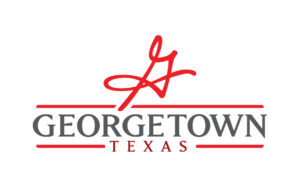Industrial developments in the works along I-35 and SH 130 are transforming the city into a booming manufacturing hub.
In the past few years, officials with companies such as Tesla and Samsung have announced or opened operations in Central Texas. This has led other suppliers and industrial companies to move to Williamson County and the surrounding area.
“There’s been a lot of bigger buildings developed [in Georgetown],” said Leigh Ellis, a principal with Austin-based real estate commercial firm Aquila Commercial. “Those are the things that have been leasing and really seem like where all the action is.”
The gist
Georgetown has seen industrial growth pick up in the last three to five years, Assistant City Manager Nick Woolery said, as two major roadways—I-35 and SH 130—run through it, providing access to “all the places that a new business would need to go.”
Ellis also said outside of the typical downtown Austin tech jobs, manufacturing tech jobs have usually been located north of the metro, something that has “set that whole area up.”
With Georgetown at the north end of the toll road and along I-35, people are flocking to the area not just to build companies, but to find job opportunities, services and enjoy a more diversified tax base, Woolery said.
The backstory
Dave Porter, executive director of the Williamson County Economic Development Partnership, said Georgetown is primed for industrial development, with suppliers interested in the city and county following successes from other developers.
“Georgetown is positioned well. It’s got water; it’s got the infrastructure; it’s got the sites and buildings to attract employers,” Porter said. “Before, [Central Texas] had a hard time recruiting manufacturers.”
Woolery also said Georgetown has been preparing sites for industrial projects over the last few years.
“[Developers have been] getting their zoning in place, [and] the city has supported them in getting their infrastructure in place,” Woolery said. “Having those sites ready to go has really helped us capitalize and see a lot of new employers and a lot of projects.”
Information on major projects
1. Crosspoint Business District
- Overview: 7 industrial buildings
- Total size: 488.7K sq. ft. (Phase 1)
- Status: Buildings 1-3 completed in Q4 2023; builds 4-7 (Phase 2) proposed
2. Gateway35 Commerce Center
- Overview: 3 industrial buildings
- Total size: 714.7K sq. ft.
- Status: Building 1 occupied by CelLink; buildings 2-3 lease ready
3. Georgetown Logistics Park
- Overview: 3 industrial buildings
- Total size: 619.7K sq. ft.
- Status: Building 1 completed; buildings 2-3 expected in Q4 2023
4. GTX Logistics Park
- Overview: 5 industrial buildings
- Total size: 3M+ sq. ft.
- Status: Building 1 completed; Building 2 construction ready; buildings 3-5 planned
5. NorthPark35
- Overview: 9 industrial buildings
- Total size: 1.7M sq. ft.
- Status: buildings 1, 2, 3 and 5 completed; buildings 4,8 and 9 delivering in 2024-25
What residents should know
The influx of industrial developments benefit the city by creating a more diversified tax rate, which lessens the tax burden for residents, Woolery said. That way, when a bond is proposed with capital improvements or other enhancements for the city, the cost burden will not fall completely on residents.
Woolery added the city actively tries to recruit manufacturing companies, not only for this reason, but because they also create high-quality, high-paying jobs.
For example, trade group Greater Austin Merchants Cooperative Association will open its new headquarters in a nearly 300,000 square foot facility in the NorthPark35 industrial park in April 2024.
Chief Operating Officer Shane Walker said this will help to not only provide more tax dollars to the city but create an additional 80 to 100 jobs.
“When you see the city provide some sort of [business] incentive, [manufacturers] are the ones we’re providing incentives for,” Woolery said. “[They’re the] ones that we’re trying to recruit and really where the interest has been.”
While industrial developments are a priority, Woolery said they can also help open the door for more retail development, something east Georgetown residents have voiced their desire for.
What they’re saying
“[Manufacturing] enhances the tax base in Georgetown, which allows them to offer more services [and] better-paying jobs, and that’s what this is really all about—bringing in opportunities that generate better-paying jobs,” said Dave Porter, Williamson County Economic Development Partnership executive director.
“[SH 130 and I-35] give us easy access to go in all directions for our many delivery locations in Central Texas and allow for direct access to expand north. … When we were looking for a location to build, Georgetown was where we started and ended our search,” said Shane Walker, Greater Austin Merchants Cooperative Association COO.
What’s next
Ellis said Georgetown residents can expect to see more manufacturers come to the area.
“Of course, it’s all about where the available space is,” Ellis said, saying that developments are being built off SH 130 due to land availability and where cities have already zoned for, or will zone for, industrial.
With nearly 2,000 acres zoned as industrial within city limits, Porter said the sheer availability of industrial space—around 6 million square feet—makes Georgetown an attractive market.
“[Georgetown has] product on the ground for companies to move quickly into facilities, and that puts them at a competitive advantage,” Porter said.
Georgetown’s industrial future
- 1,980 acres zoned for industrial use
- 2 facilities to be complete by 2024
- 5 projects planned or proposed
Click here for the article source.

